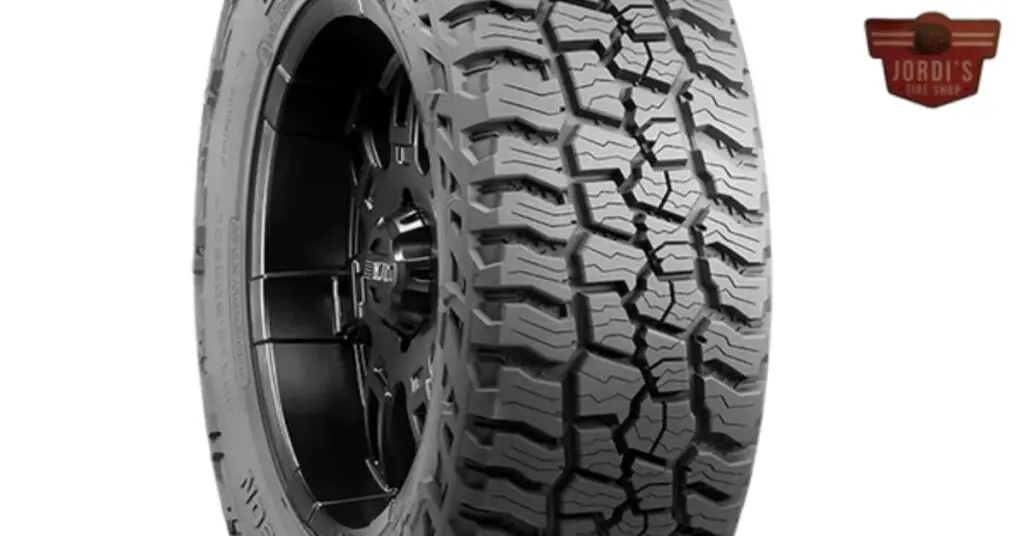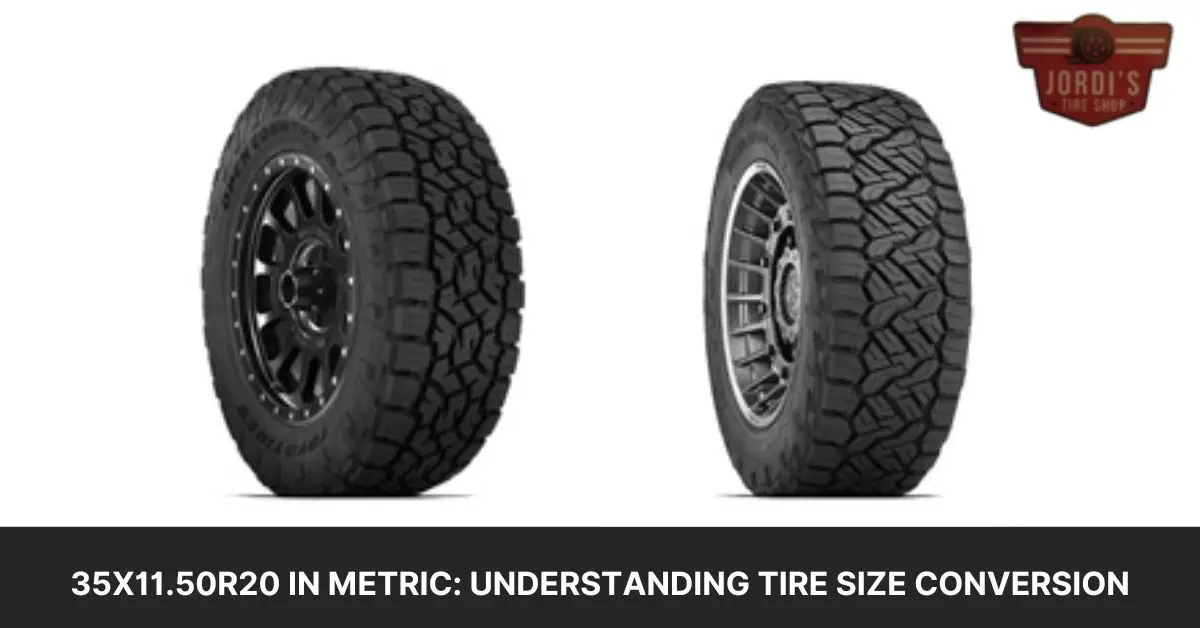In the world of off-roading and truck customization, tire sizes are more than just numbers—they’re a badge of honor. That’s why we’re diving into the specifics of one of the most sought-after sizes: 35×11.50r20. But here’s the twist: we’re translating it into metric. Why? Because understanding the global language of tire sizes opens up a whole new world of possibilities.
Converting tire sizes from the imperial system to metric might seem like a daunting task at first. But don’t worry, we’ve got your back. By breaking down the numbers and what they represent, we’re about to make this a lot simpler than it sounds. This knowledge not only helps in making informed decisions about tire purchases but also in understanding the compatibility and performance implications of different tire sizes on your vehicle. So, let’s get started on this exciting journey together.
Understanding the “35×11.50r20 in Metric” Conversion

Moving on from the emphasis on the importance of tire size knowledge in vehicle customization and performance, let’s dive into understanding the “35×11.50r20” size in metric terms. This conversion is not only useful but essential for those of us looking to compare tire sizes across countries that use different measurement systems.
The “35×11.50r20” size refers to the tire’s diameter, width, and the diameter of the wheel it fits, all in inches. However, when we convert these measurements into the metric system, we’re looking at millimeters and the tire’s aspect ratio instead of inches.
First, the “35” represents the tire’s height or diameter in inches. To convert this to millimeters, we multiply by 25.4, the number of millimeters in an inch. Hence, 35 inches equals approximately 889 millimeters.
Next, the “11.50” indicates the tire’s width in inches. Following the same conversion principle, 11.50 inches translate into about 292.1 millimeters.
Lastly, the “r20” signifies the wheel diameter, which is already in inches. Here, 20 inches simply converts to 508 millimeters, representing the diameter of the wheel.
When we talk about a “35×11.50r20” tire in metric terms, we’re referring to a tire that’s approximately 889mm in diameter, 292mm in width, and fits a 508mm diameter wheel. Knowing these conversions allows us to better understand tire sizes in different measurement systems, making it easier to find equivalent sizes and ensure proper fitment for our vehicles, whether we’re shopping domestically or looking at international options.
Comparison with Other Tire Sizes

After diving into the conversion of the 35×11.50r20 tire size into metric measurements, let’s compare it with other common tire sizes. This comparison will not only broaden our understanding but also aid in making more informed decisions when choosing between different sizes for vehicle customization.
Firstly, consider the 33-inch tire size, a popular choice for off-roading enthusiasts. In metric, this translates roughly to 285/75r16. Compared to our 35×11.50r20 size, or approximately 315/70r20 in metric, the 33-inch tire is slightly smaller in diameter. This size difference affects ground clearance and may influence the vehicle’s off-road capability.
Next, let’s look at the 37-inch tire size, another favorite among off-road and truck customization fans. Converted to metric, it’s approximately 345/75r20. This tire is larger in diameter than the 35×11.50r20, offering increased ground clearance and potentially better off-road performance, but it also might require more modifications to the vehicle to fit properly without rubbing.
When considering narrower options, such as a 275/65r20 tire, we notice it’s significantly narrower than our converted 315/70r20 size. The narrower width impacts the tire’s footprint and traction, which might be a consideration for those prioritizing fuel efficiency over off-road capability.
Finally, comparing to a wider tire, like a 325/60r20, which is wider but has a similar diameter to our 35×11.50r20, offers a different perspective. A wider tire can provide better stability and traction but might affect fuel economy negatively.
Through these comparisons, we see the importance of not only the tire’s diameter but also its width and aspect ratio when selecting the perfect tire for our needs. Each measurement plays a crucial role in the vehicle’s performance, aesthetics, and functionality.
Benefits of Choosing 35×11.50r20 Tires
Building on our understanding of the nuances in tire sizes, let’s delve into the advantages of selecting 35×11.50r20 tires for your vehicle. Our comprehensive comparison with other tire sizes like 33-inch and 37-inch varieties, as well as 275/65r20 and 325/60r20, has laid a solid foundation for recognizing the unique benefits this size brings to the table, especially for off-roading enthusiasts and truck customization fans.
Improved Ground Clearance: One major perk of opting for 35×11.50r20 tires is the enhanced ground clearance they provide. This feature proves invaluable when navigating rough terrain, as it minimizes the risk of underbody damages, ensuring a smooth ride even in the toughest conditions.
Optimal Off-Road Performance: These tires offer a balance between width and diameter, equipping vehicles with the capability to tackle various off-road challenges. The wider footprint increases traction on loose surfaces like sand and mud, while the diameter ensures a smoother transition over obstacles.
Fuel Efficiency Consideration: While larger tires can impact fuel efficiency, the 35×11.50r20 size strikes a balance, offering improved performance without significantly affecting fuel consumption. This means you can enjoy the benefits of larger tires without the usual drawback of increased fuel costs.
Superior Traction and Stability: The design and dimensions of 35×11.50r20 tires contribute to better traction and stability, essential for both on-road and off-road driving. The wider tread pattern enhances grip, while the overall size ensures the vehicle remains stable at higher speeds and in challenging driving conditions.
Aesthetic Appeal: For those who value the appearance of their vehicle as much as its performance, these tires do not disappoint. Their imposing size and aggressive tread patterns enhance the aesthetic appeal of any truck or SUV, making it stand out on the road or trail.
The benefits of choosing 35×11.50r20 tires extend beyond mere aesthetics or the ability to traverse rough terrains. They offer an ideal combination of performance, efficiency, and style, making them a top choice for discerning drivers seeking to upgrade their vehicle’s capabilities and appearance.
Installation and Compatibility

After understanding the benefits and comparing the 35×11.50r20 tire size with its counterparts, it’s crucial to discuss its installation and compatibility with vehicles. Ensuring a tire fits your vehicle isn’t just about the wheel diameter; several other factors come into play.
Firstly, checking the vehicle’s owner manual for recommended tire sizes is a step we can’t overemphasize. This size, translating roughly to 295/65R20 in metric measurements, fits a variety of trucks and SUVs, but it’s always best to confirm compatibility.
Secondly, consider the wheel well clearance. The 35×11.50r20 tires are wider and taller than many standard sizes, meaning they require more space to avoid rubbing against the vehicle’s body or suspension components. Vehicles lifted or with adjustable suspension systems usually accommodate these tires more easily.
Thirdly, think about the rim width. These tires fit most 20-inch rims but perform best on rims 8.5 to 11 inches wide. Using a rim within this range ensures the tire’s sidewalls are supported properly, enhancing the tire’s performance and lifespan.
Lastly, it’s important to factor in the vehicle’s load rating. Heavier trucks need tires that can support their weight. The 35×11.50r20 tires generally have high load ratings, making them suitable for towing and hauling heavy loads without compromising safety or performance.
Considering these factors, you’ll ensure the 35×11.50r20 tires not only fit your vehicle but also enhance its performance, safety, and appearance. Ensuring compatibility before installation can save time, money, and ensure the best driving experience.
Maintenance Tips for 35×11.50r20 Tires

After ensuring our 35×11.50r20 tires are perfectly installed and compatible with our vehicles, maintaining them becomes next on our priority list. Proper maintenance not only extends their lifespan but also preserves the performance and safety benefits they bring. Here, we’ll share some essential tips to keep these tires in top condition.
Regular Inspections
Firstly, we advocate for regular visual inspections of the tires. Checking for signs of wear, such as tread wear or sidewall damage, can prevent unexpected failures. If we notice any irregularities, such as deep cuts or bulges, it’s time for a professional evaluation.
Tire Pressure Checks
Maintaining the correct tire pressure is crucial. Underinflated or overinflated tires compromise handling, fuel efficiency, and can lead to uneven wear. We recommend checking the tire pressure monthly and adjusting it according to the manufacturer’s specifications found in the vehicle’s manual.
Rotation Schedule
Tire rotation ensures even wear across all four tires, extending their service life. For 35×11.50r20 tires, we follow the rotation pattern suggested by the tire or vehicle manufacturer, typically every 5,000 to 7,000 miles.
Balancing and Alignment
Keeping tires balanced and the vehicle properly aligned prevents uneven wear and vibration. We suggest having them balanced at the time of installation and whenever a tire is replaced or repaired. Alignment checks, on the other hand, are best done at least once a year or if there’s a noticeable change in the vehicle’s handling or tire wear pattern.
Clean and Protected
Lastly, keeping the tires clean from dirt and road chemicals using mild soap and water protects the rubber compounds. Applying a UV tire protector can also prevent premature aging caused by exposure to the sun.
Following these maintenance tips for our 35×11.50r20 tires, we ensure they continue to provide the optimal performance and safety benefits that led us to choose them initially, making every drive a superior experience.
Conclusion
We’ve explored the world of 35×11.50r20 tires, from the basics of their size in metric to the nitty-gritty of maintenance. It’s clear that choosing the right tires and taking good care of them can significantly impact your driving experience, especially if off-roading and truck customization are your passions. Remember, regular maintenance isn’t just about longevity; it’s about ensuring every journey is as smooth and safe as possible. So, let’s put these insights into action and enjoy the ride.
Related Posts:
- 32×11.50r15 in Metric: Converting Tire Size for Easy Comparison
- 35×11.50r20 in Metric: Understanding Tire Size Conversion
- 33 12.5 R18 in Metric: Understanding Tire Size Conversion
- 33 12.50 R22 in Metric: Understanding Tire Size Conversion
- 33 12.50 R20 to Metric: A Quick Guide to Converting Tire Sizes
- 35 12.5 R20 Metric: Understanding Tire Size and Compatibility
- 33 12.50 R17 Metric: A Guide to Tire Size and Conversion Charts
- 35 12.50 R17 Equivalent: Finding the Right Tire Size for Your Vehicle
- 35/12.5 r18 Equivalent: Finding the Right Tire Size for Your Vehicle
- 33 12.50 r16 Equivalent: Finding the Right Tire Size for Your Vehicle

